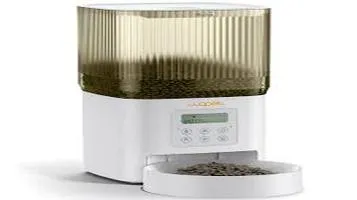A Comprehensive Review of Thermal Underwear: The Unsung Hero of Cold Weather Comfort
Thermal underwear, often referred to as thermals or long underwear, is a type of clothing designed to provide insulation and retain body heat in cold weather conditions. Typically made from fabrics like wool, polyester, or specialized blends, these garments are lightweight yet highly effective at trapping warmth. The key feature of thermal underwear is its ability to wick moisture away from the skin, keeping the wearer dry and comfortable. This makes them ideal for outdoor activities such as skiing, hiking, or camping in chilly environments. Available in various styles, including tops, bottoms, and full-body suits, thermal underwear fits snugly to maximize heat retention without restricting movement. Their seamless design and soft texture offer both functionality and comfort, making them a staple in winter wardrobes.

As the chilly winds of winter begin to blow, the importance of appropriate attire becomes paramount. One often overlooked but essential component of a winter wardrobe is thermal underwear. Designed to provide a base layer of warmth, thermal underwear is crucial for keeping comfortable in cold weather conditions. In this review, we will delve into the various aspects of thermal underwear, including material, design, functionality, and overall performance.
Material Matters
The material of thermal underwear is perhaps its most critical feature. The market offers a range of options, including synthetic fibers, wool, and blends. Each material has its own unique properties:
1. Synthetic Fibers (Polyester, Nylon, Spandex): Synthetic thermal underwear is generally lightweight, moisture-wicking, and quick-drying. These properties make it ideal for active wearers who might be skiing, hiking, or engaging in other outdoor activities. Many synthetic options also offer a decent amount of stretch, providing a snug yet flexible fit. However, synthetic materials can sometimes retain odors, which might require more frequent washing.
2. Wool (Merino Wool): Merino wool is often heralded as the gold standard for thermal underwear. It is naturally insulating, moisture-wicking, and odor-resistant. Merino wool is also incredibly soft, making it comfortable for extended wear. The downside is that wool is generally more expensive and may require delicate care to maintain its properties.
3. Blends: Many thermal underwear options are a blend of synthetic fibers and natural materials like wool or cotton. These blends aim to combine the best features of each material, such as the moisture-wicking capabilities of synthetics with the natural warmth and odor resistance of wool.
Design and Fit
The design of thermal underwear is another crucial factor in its effectiveness. Good thermal underwear should fit snugly against the skin to trap body heat effectively while still allowing for a full range of motion. Key design elements to consider include:
- Seam Construction: Flatlock seams are preferable as they reduce irritation and chafing, making the garment more comfortable for extended use.
- Elastic Waistbands and Cuffs: These ensure a secure fit that prevents the garment from riding up or bunching.
- Layering Compatibility: Thermal underwear should be thin enough to layer comfortably under other clothing without causing bulkiness.
Functionality and Performance
When it comes to functionality, thermal underwear should excel in several areas:
1. Warmth: The primary function of thermal underwear is to retain body heat. High-quality thermal underwear will efficiently trap and retain warmth, especially around the core and extremities.
2. Moisture Management: Effective thermal underwear should wick moisture away from the body to keep you dry. This is particularly important during physical activities, as accumulated sweat can make you feel colder.
3. Breathability: While retaining warmth is crucial, breathability ensures that you don't overheat. Good thermal underwear will allow for sufficient airflow to regulate body temperature.
4. Odor Control: Extended wear can lead to odor build-up, especially in synthetic materials. Many high-end thermal underwear options come with antimicrobial treatments to combat odor, a feature that is particularly beneficial for multi-day outdoor activities.
Practical Use and Versatility
Thermal underwear is incredibly versatile and suitable for a wide range of activities. Whether you are engaging in winter sports, hiking, or simply braving a cold commute, thermal underwear can make a significant difference in comfort levels. Its versatility extends to indoor use as well; many people find thermal underwear to be a cozy option for lounging around the house during the colder months.
Cost vs. Value
The price of thermal underwear can vary widely, from budget-friendly options to high-end, performance-oriented models. While it might be tempting to opt for cheaper alternatives, it's essential to consider the long-term value. High-quality thermal underwear, though more expensive, often offers superior performance, durability, and comfort. It can be a worthwhile investment, particularly for those who spend a significant amount of time in cold environments.
Final Thoughts
Thermal underwear might not be the most glamorous addition to your winter wardrobe, but it is undoubtedly one of the most crucial. Its ability to provide warmth, manage moisture, and offer comfort makes it an indispensable item for cold weather. Whether you choose synthetic, wool, or a blend, investing in good-quality thermal underwear can make your winter experience significantly more enjoyable. Remember, in the battle against the cold, the right base layer can make all the difference.






